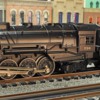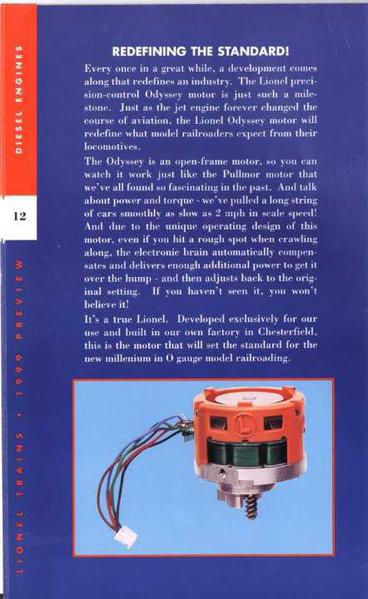I don't doubt some thing "could" be done to make a passable cruise package. OTOH, the ROI is probably not there to justify the engineering effort. Also, as noted previously, you're stuck with the existing motor design, that probably complicates the effort. If you were going to replace the motor, it would make far more sense to just use a can motor and the excellent existing cruise technology.
I guess, my point was the field is not that "difficult" to handle. It is low resistance because it is in series. If moved to parallel a voltage step down could be used to provide constant field. Though I am in agreement that this is a difficult endeavor. I am more in servoguys camp that 3 poles and the size of the pole gaps have more to do with a difficult cruise implementation. Even the DC stuff has issues with low pole motors or those with segment gaps that cause noticeable cogging. Hence higher end motors designed specifically for Low Cog operation. Such as Pittman. G
In the late 1990s Marklin felt there was enough ROI to undertake such a project. They developed a kit to retro-fit existing locos with their "High-Efficiency 5 star Electronic Propulsion System." If I recall, it was a 5-pole armature (to replace the original 3-pole armature) and a circuit for closed-loop feedback speed control. I'm not sure if the field was kept in series or excited separately. I don't recall an optical sensor so I believe it read back-EMF.
Based on this thread, I presume the 5-pole armature was an expensive but necessary part of the refit to eliminate that nasty torque ripple.
It's important to note that the motor design Marklin used up to that time was very similar to Lionel's: an open frame series motor with a wound field, driving a train of spur gears. (Think of a postwar 2046 steamer shrunken to HO size.) The SHAPE and implementation of the motor is the biggest problem- you just CAN'T stick a can motor in a 2056. The shape and orientation are all wrong. The original motor has a flat "pancake" armature and spur gear drive train, which descended from Standard Gauge, or perhaps even clockwork mechanisms. It's working within the limitations of that physical envelope that's the biggest challenge.
However... a guy in the Silver or Blue hall at York sells custom 5-pole armatures for American Flyer steam locos, and he makes these himself. If someone would offer a similar 5-pole armature as a retro-fit for some of the more common Postwar motor types we would be halfway there. I would pay handsomely to have a Postwar 2056, 2026, etc., run like a modern can-motored loco; even for a 30% improvement over stock. On a commercial scale, it might be necessary to sell the upgrade as a remanufactured chassis with a "trade-in" program.
You might also find it interesting that eventually, for their new production, Marklin migrated to a brushless electronically commutated motor and worm gear drive system they dubbed the 'Softdrive Sinus', which was VERY similar in concept to Lionel's original Odyssey motor. I guess now we know who stole that engineering sample from the Lionel tent at York ;-)










